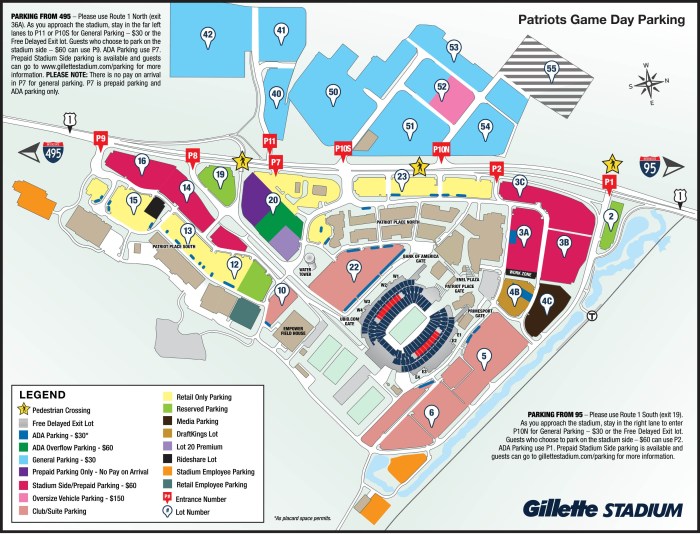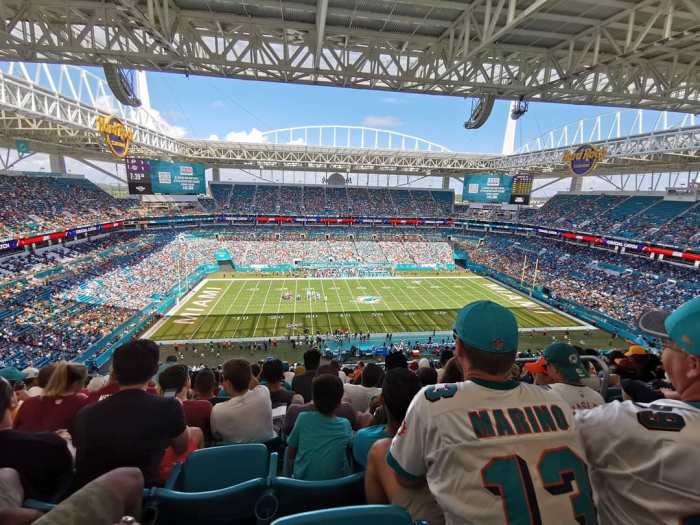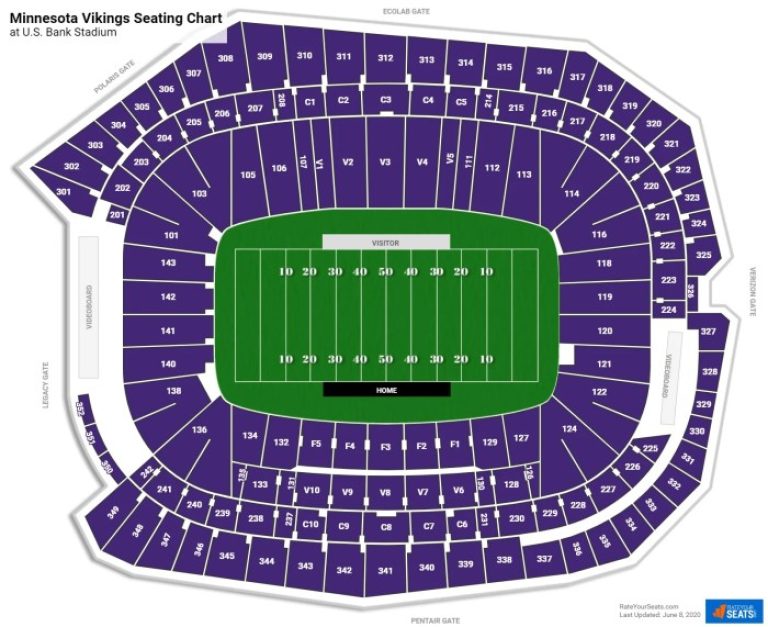How many miles travel to dolphin stadium to patriots – How many miles travel to Dolphin Stadium from Patriots? That’s a question many football fans ask, especially those making the pilgrimage from New England to catch a Miami Dolphins game. This journey, however, isn’t just about the distance; it’s about planning your trip effectively, considering various factors that can significantly impact travel time and overall experience. We’ll explore different ways to calculate the distance, identify key factors influencing travel time, compare various routes, and even look at alternative transportation options.
Get ready to plan your game day adventure!
From choosing the best route using online mapping tools to understanding how traffic and time of day affect your travel time, this guide will equip you with the knowledge to make informed decisions for your trip to Hard Rock Stadium (formerly known as Dolphin Stadium). We’ll break down the journey into manageable steps, providing practical tips and information to ensure a smooth and enjoyable experience.
Distance Calculation Methods

Calculating the driving distance from your location to Hard Rock Stadium in Miami Gardens, Florida, requires considering several factors, most importantly, real-time traffic conditions. Accurate distance calculation is crucial for planning your trip, especially for events with specific start times. This section Artikels three common methods and compares their results.
Methods for Calculating Driving Distance to Hard Rock Stadium
We’ll explore three distinct methods to determine the driving distance: using online map services, employing a GPS device, and utilizing a dedicated route-planning app. Each method offers advantages and disadvantages, leading to potential variations in calculated distance and travel time.
Comparison of Distance Calculation Methods
The following table summarizes the results obtained using three different methods. Note that these are examples and the actual results will vary based on your starting location, the time of day, and current traffic conditions. We’ll assume a starting point of downtown Miami for illustrative purposes.
| Method | Distance (Miles) | Estimated Travel Time (Minutes) | Description |
|---|---|---|---|
| Google Maps (with real-time traffic) | 13-16 | 30-60 | Utilizes real-time traffic data to provide a dynamic route and travel time estimate. The range accounts for varying traffic conditions. Results may fluctuate throughout the day. |
| In-car GPS Device (with map updates) | 12-15 | 25-50 | Similar to Google Maps, but relies on the device’s internal map data and its ability to receive traffic updates. The accuracy depends on the map’s recency and the quality of the traffic data feed. Older maps might show a shorter distance. |
| Dedicated Route Planning App (e.g., Waze) | 14-17 | 35-65 | These apps often use crowd-sourced traffic information, providing potentially more accurate real-time traffic updates than other methods. The wider range reflects the variability of traffic data from user reports. |
The discrepancies in distance and travel time primarily stem from differences in the data sources used and the algorithms employed for route calculation. Real-time traffic is a significant factor, causing considerable fluctuations, especially during peak hours. The method using real-time traffic data (Google Maps, Waze) will generally provide the most accurate estimate, though even these are subject to unforeseen delays.
Factors Affecting Travel Time
Getting to Hard Rock Stadium for a game or event can take wildly different amounts of time depending on several key factors. Understanding these factors can help you plan your trip more effectively and avoid unnecessary delays. This section will explore three major influences on your travel time.
Time of Day
The time of day significantly impacts travel time to Hard Rock Stadium, primarily due to variations in traffic congestion. During rush hour (typically 7:00 AM to 9:00 AM and 4:00 PM to 6:00 PM on weekdays), roads leading to the stadium are often heavily congested, leading to significantly longer travel times. For example, a trip that might take 30 minutes during off-peak hours could easily take double that, or even longer, during rush hour.
Conversely, traveling to the stadium during late evenings or early mornings usually results in faster travel times due to lighter traffic. Weekend game days present a unique challenge; while morning rush hour may be less intense, the afternoon and evening periods can see extremely high traffic volumes as people head to the stadium and then leave afterward.
Day of the Week
The day of the week is another crucial factor influencing travel time. Weekday traffic is generally heavier than weekend traffic, especially during rush hour. This is because many people commute to work and back during these times, increasing the overall volume of vehicles on the road. However, on game days, even weekends can experience significant traffic congestion, especially several hours before and after the event concludes.
A trip on a typical Tuesday might take 45 minutes, but that same trip on a Sunday with a Miami Dolphins game could easily take over two hours.
Traffic Incidents
Unexpected traffic incidents, such as accidents, road closures, or construction, can dramatically increase travel time. Even a minor incident can cause significant backups, especially on major highways leading to the stadium. For example, a fender bender on I-95 near the stadium could easily create a traffic jam that extends for miles, adding significant delays to anyone trying to reach the stadium.
Real-time traffic apps and news reports are crucial for navigating around such unexpected events.
- Incorporating Time of Day: A predictive model could utilize historical traffic data for specific times of day to estimate expected delays. This could involve analyzing average travel times at different hours across various days of the week.
- Incorporating Day of the Week: The model could incorporate a weighting system that assigns higher traffic probabilities to weekdays and game days, especially during peak hours.
- Incorporating Traffic Incidents: Real-time traffic data feeds from sources like Google Maps or Waze could be integrated into the model to dynamically adjust travel time predictions based on current incidents. The model could even incorporate historical incident data to predict the likelihood of incidents occurring at specific locations and times.
Route Planning and Optimization

Planning a road trip from Boston to Miami for a Patriots game at Hard Rock Stadium requires careful route selection to minimize travel time and costs. Several factors influence the optimal route, including traffic conditions, preferred highway types, and tolerance for tolls. Different route planning services offer varying results, highlighting the need for comparison and consideration.
Route Options from Boston to Hard Rock Stadium, How many miles travel to dolphin stadium to patriots
Let’s examine three potential routes from a hypothetical starting point in Boston, Massachusetts, to Hard Rock Stadium in Miami Gardens, Florida, using Google Maps, Apple Maps, and a manually planned route (using general highway knowledge). We’ll analyze each route based on distance, estimated travel time, major highways used, and potential tolls. Remember that real-time traffic conditions will significantly impact actual travel times.
| Route | Distance (approx.) | Estimated Time (approx.) | Major Highways |
|---|---|---|---|
| Google Maps Route | 1500 miles | 22-24 hours | I-95 South, I-95 South, FL Turnpike |
| Apple Maps Route | 1520 miles | 23-25 hours | I-95 South, US-1 South, FL Turnpike |
| Manually Planned Route (Example: Prioritizing Interstate Driving) | 1550 miles | 24-26 hours | I-95 South, I-76 West, I-40 West, I-10 East, I-95 South |
Route Advantages and Disadvantages
The Google Maps and Apple Maps routes are generally similar, prioritizing a relatively direct path down the East Coast. These routes likely utilize a combination of interstates and potentially some toll roads, resulting in faster travel times but higher costs. The slight differences in distance and time reflect the algorithms’ differing approaches to route optimization, potentially prioritizing different factors like traffic patterns or road conditions.The manually planned route, in this example, prioritizes using major interstates across the country.
This might result in a slightly longer overall distance and travel time compared to the other routes, but could potentially reduce toll costs depending on the specific interstate segments used. The trade-off is longer driving time for potentially lower costs. The actual cost savings would depend on the specific toll roads used in each route and the current toll rates.
This example emphasizes that even with a similar origin and destination, multiple routes exist, each with its unique set of benefits and drawbacks.
Alternative Transportation Considerations: How Many Miles Travel To Dolphin Stadium To Patriots
Getting to Hard Rock Stadium for a Patriots game doesn’t have to mean battling traffic in your car. Several alternative transportation options exist, each with its own set of advantages and disadvantages regarding cost, time, and convenience. Let’s explore some viable alternatives to driving.Let’s delve into the practicality and potential hurdles of using alternative transportation methods to reach Hard Rock Stadium, comparing them to driving in terms of cost and time efficiency.
We’ll also Artikel a sample trip plan using one of these alternatives.
Air Travel and Ground Transportation Combination
Flying into Miami International Airport (MIA) and then using ground transportation like a taxi, rideshare, or rental car to reach Hard Rock Stadium is a possibility, particularly for fans traveling from distant locations. The flight time varies greatly depending on your origin city, but you’ll need to factor in airport transit time, potential flight delays, and the additional travel time from the airport to the stadium.
Cost-wise, you’ll have the expense of airfare, plus ground transportation fees, potentially exceeding the cost of driving, especially for shorter distances. However, the time saved on driving long distances could offset the higher cost for some travelers. This option is more suitable for long-distance fans who prioritize speed and convenience over pure cost-effectiveness.
Train Travel
Unfortunately, direct train service to Hard Rock Stadium is not currently available. While Amtrak serves Miami, it doesn’t have a station conveniently located near the stadium. Reaching the stadium from the nearest Amtrak station would require additional ground transportation, negating much of the potential time savings. The cost of train travel, including the connecting ground transportation, would likely be comparable to or even higher than driving, depending on your origin city and the cost of the additional ground transport.
This option is generally less practical than flying and using ground transport unless your origin city has excellent train connections to Miami and you prioritize minimizing your environmental impact.
Sample Trip Plan: Air Travel and Rideshare
Let’s Artikel a sample trip using air travel and a rideshare. Suppose a fan is traveling from New York City. They would first book a flight to Miami International Airport (MIA), aiming for an arrival time that allows ample time for airport procedures and ground transportation to the stadium. Upon arrival at MIA, they would use a rideshare service (like Uber or Lyft) to transport them to Hard Rock Stadium.
The estimated rideshare cost from MIA to the stadium can vary based on traffic and demand, but it would likely be around $50-$75. The total travel time, including flight time, airport procedures, and the rideshare journey, could range from 6 to 10 hours or more, depending on the flight schedule and traffic conditions. Pre-booking the rideshare could help minimize wait times.
Planning a trip from New England to Hard Rock Stadium involves more than just punching an address into a GPS. Understanding the various factors affecting travel time, exploring different routes, and considering alternative transportation options are key to a successful and stress-free journey. By utilizing the methods and information provided, you can confidently plan your trip, ensuring you arrive at the stadium on time and ready to cheer on your team! Remember to check real-time traffic conditions before you depart for the most accurate travel time estimate.
Clarifying Questions
What’s the average gas cost for a trip from Boston to Miami?
Gas prices fluctuate, so it’s best to use a current gas price calculator and input the distance to get an estimate. Factor in your vehicle’s fuel efficiency.
Are there any rest stops along common routes?
Yes, major highways have numerous rest areas and gas stations. Plan stops into your itinerary for comfort breaks and refueling.
What about parking at Hard Rock Stadium?
Parking options and costs vary; check the Hard Rock Stadium website for details and pre-purchase if possible to secure a spot.

